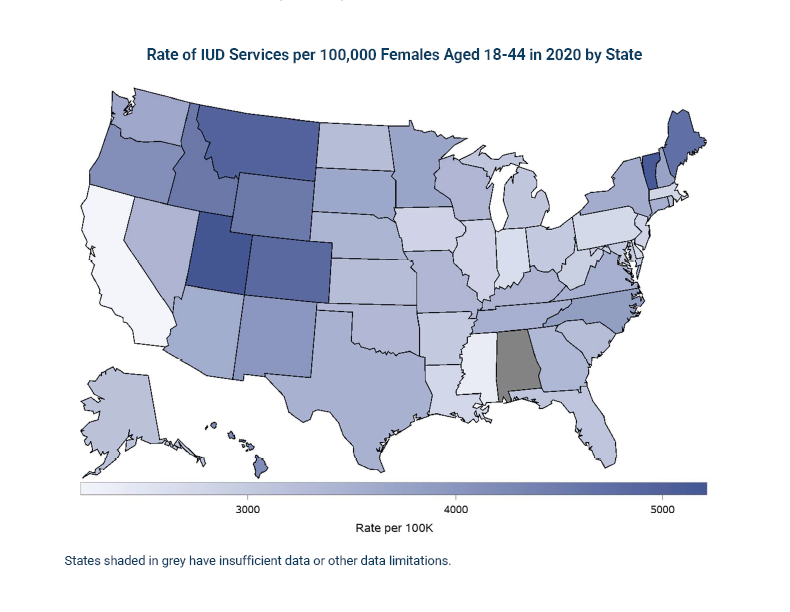Publications
-
Focusing on Seven Services Could Eliminate More Than Two-Thirds of Low-Value Care in HCCI’s ESI Data
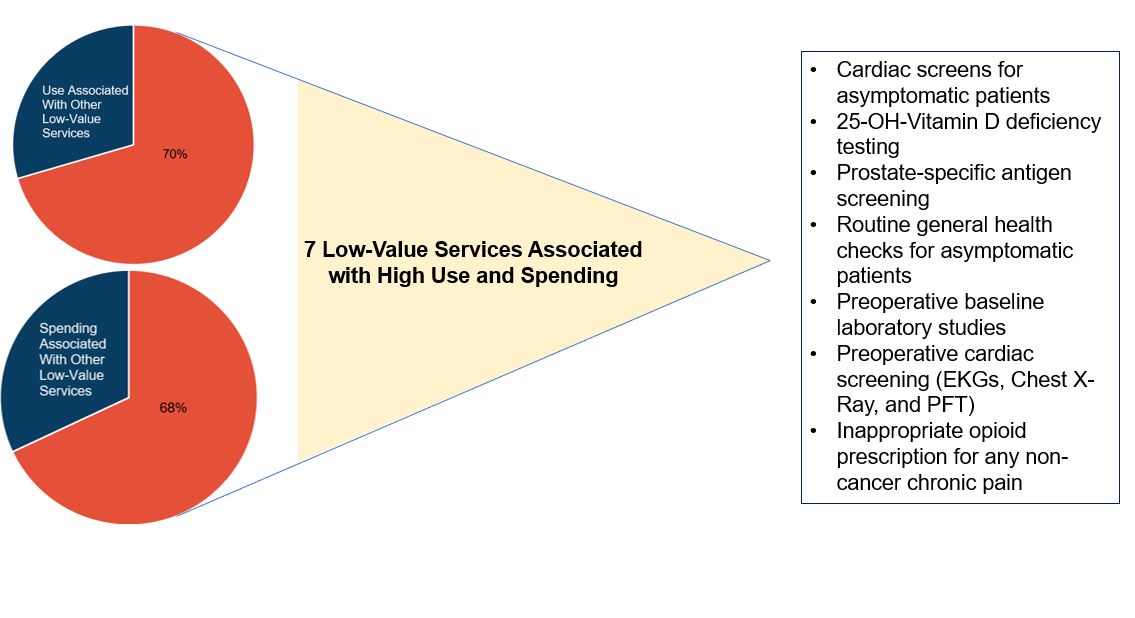 Read more: Focusing on Seven Services Could Eliminate More Than Two-Thirds of Low-Value Care in HCCI’s ESI Data
Read more: Focusing on Seven Services Could Eliminate More Than Two-Thirds of Low-Value Care in HCCI’s ESI DataThere is substantial evidence that people in the U.S. receive health care services judged to be of low-value. These services are identified as low value based on recommendations from the U.S. Preventive Services Task Force (USPSTF) and professional medical societies that there is little to no clinical value associated with their provision and potential for…
-
Insulin Prices in ESI Nearly Doubled from 2012-2021, with Effects of Emerging Biosimilars Evident in Recent Years
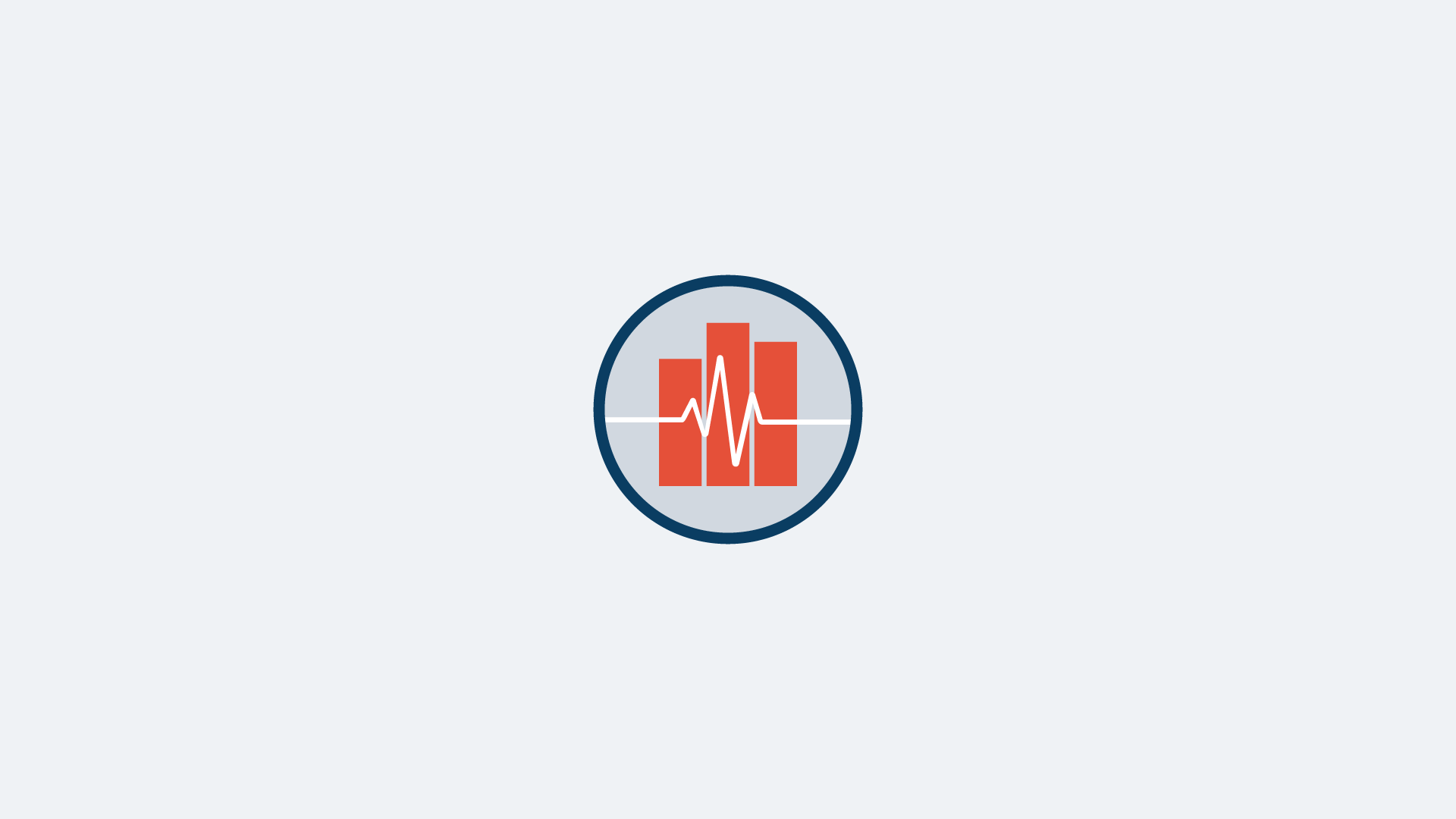 Read more: Insulin Prices in ESI Nearly Doubled from 2012-2021, with Effects of Emerging Biosimilars Evident in Recent Years
Read more: Insulin Prices in ESI Nearly Doubled from 2012-2021, with Effects of Emerging Biosimilars Evident in Recent YearsInsulin is a life-saving medication for millions of Americans who live with diabetes. As the price of insulin has risen, people who depend on insulin have had to make difficult decisions about whether to pay for their medication or other necessities. Some have been forced to ration their supply, with devastating results. Recent legislation has limited insulin out-of-pocket costs at…
-
Uptake of Biosimilars Remains Low Among People with Employer-Sponsored Insurance
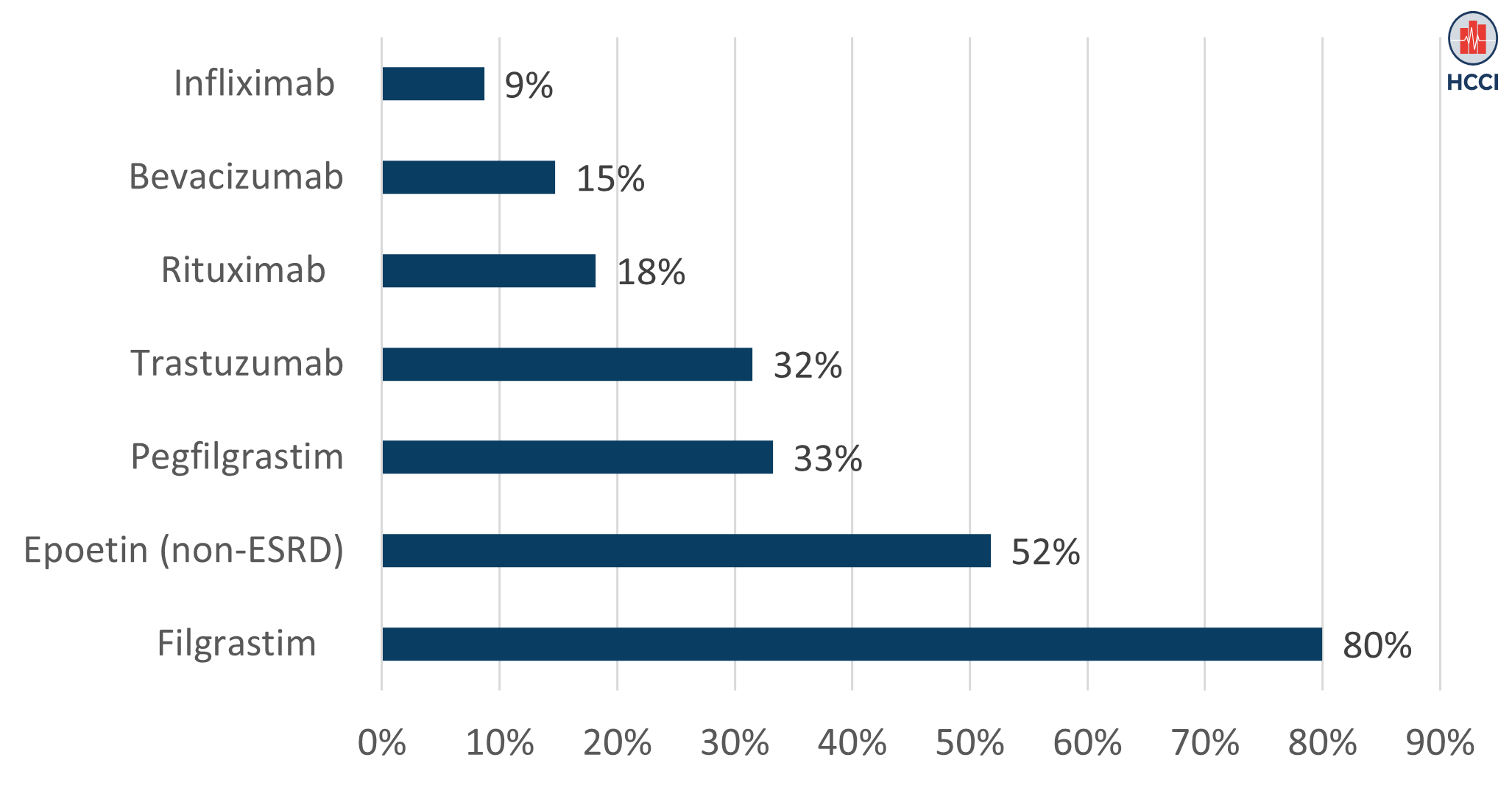 Read more: Uptake of Biosimilars Remains Low Among People with Employer-Sponsored Insurance
Read more: Uptake of Biosimilars Remains Low Among People with Employer-Sponsored InsuranceBiologic drugs represent advances in medical research and treatment but are a major driver of drug spending in the United States. Spending on biologics increased by 50% between 2014 and 2018 in the U.S. even though just 2% of Americans used them. Biosimilars, clinically equivalent, lower-cost versions of original biologic drugs, analogous to generic versions…
-
Rising Share of Chemotherapy Services Provided in Outpatient Departments is Associated with Higher Costs for Patients and Payers
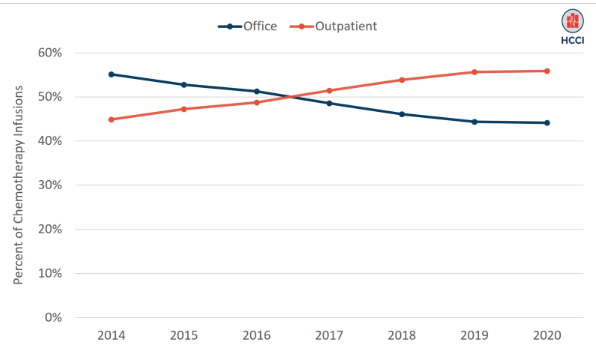 Read more: Rising Share of Chemotherapy Services Provided in Outpatient Departments is Associated with Higher Costs for Patients and Payers
Read more: Rising Share of Chemotherapy Services Provided in Outpatient Departments is Associated with Higher Costs for Patients and PayersEvery year, 1 million people in the U.S. receive chemotherapy for cancer treatment. Most chemotherapy treatment requires patients to be present in a physician’s office or hospital outpatient department to receive the treatment (typically an infusion or injection). Chemotherapy plays a critical role in treatment for many patients with cancer, but it also often leads…
-
HCCI Spotlights Colorectal Cancer Awareness Month: Use of Cologuard Doubled over 2018-2020, Despite Drops Early in the COVID-19 Pandemic
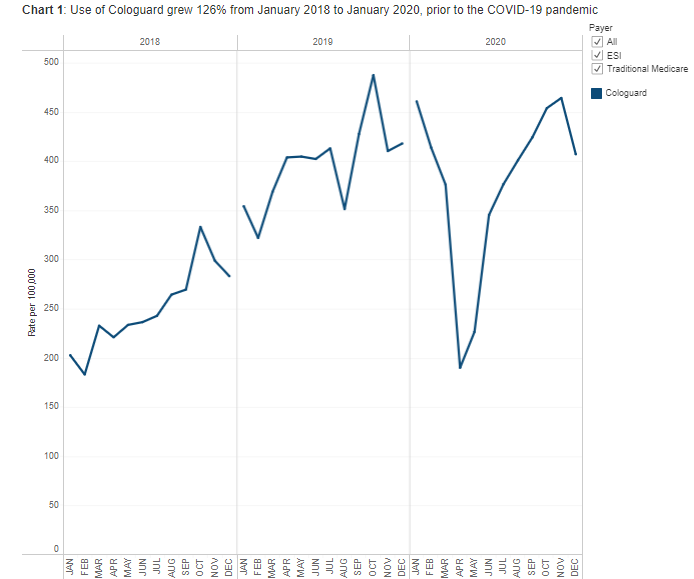 Read more: HCCI Spotlights Colorectal Cancer Awareness Month: Use of Cologuard Doubled over 2018-2020, Despite Drops Early in the COVID-19 Pandemic
Read more: HCCI Spotlights Colorectal Cancer Awareness Month: Use of Cologuard Doubled over 2018-2020, Despite Drops Early in the COVID-19 PandemicColorectal cancer screenings are essential for early disease detection, prevention, and treatment. Since 2014, Cologuard, a DNA-based screening test that can detect colorectal cancer and precancerous cells, has been available to individuals 45 and older at average risk for colorectal cancer. In contrast to colonoscopies, which must be done at a health care facility, Cologuard is…
-
HCCI Spotlights Colorectal Cancer Awareness Month: Colonoscopy Prep Drugs Underscore the Tradeoff Between Cost and Patient Preference
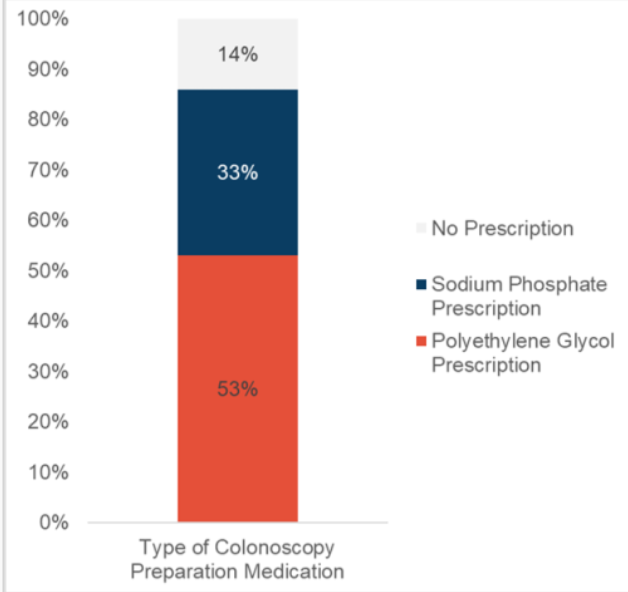 Read more: HCCI Spotlights Colorectal Cancer Awareness Month: Colonoscopy Prep Drugs Underscore the Tradeoff Between Cost and Patient Preference
Read more: HCCI Spotlights Colorectal Cancer Awareness Month: Colonoscopy Prep Drugs Underscore the Tradeoff Between Cost and Patient PreferenceColorectal cancer is the third most common cancer diagnosed in the U.S., and the second most common cause of cancer deaths among men and women combined. Screening via colonoscopy is highly effective in terms of improving prognosis of colorectal cancer via early detection; over 90% of patients who are diagnosed early (i.e., when the cancer is small…
-
Seasonal Trends in Antibiotic Use were Disrupted by COVID-19
 Read more: Seasonal Trends in Antibiotic Use were Disrupted by COVID-19
Read more: Seasonal Trends in Antibiotic Use were Disrupted by COVID-19November and December of 2022 saw growth in rates of flu, RSV, and COVID, that renewed attention to a seasonal trend of increased respiratory illnesses in the winter months. Data from Medicare, Medicaid, and private insurance illustrate the seasonal ups and downs of respiratory infections. Earlier HCCI research showed that hospitalizations from respiratory illness increased…
-
HCCI Data Brief: Sexual and Reproductive Health Among People with Employer-Sponsored Insurance
Read more: HCCI Data Brief: Sexual and Reproductive Health Among People with Employer-Sponsored InsuranceReproductive and sexual health services play an important role in daily life and wellbeing for many people. These services include preventive services (such as screenings for sexually transmitted infections and reproductive cancers), contraceptive services, and services relating to pregnancy and childbirth. The objective of this report is to provide national and state data on the use…
-
Going Beyond the Healthy Marketplace Index: A Closer Look at Four Metro Areas
Tags: HMI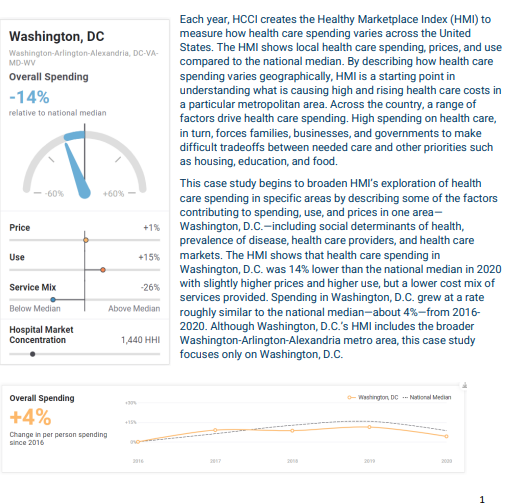 Read more: Going Beyond the Healthy Marketplace Index: A Closer Look at Four Metro Areas
Read more: Going Beyond the Healthy Marketplace Index: A Closer Look at Four Metro AreasEach year, HCCI creates the Healthy Marketplace Index (HMI) to examine how health care spending varies across the United States. The HMI shows health care spending, prices, and use compared to the national median for close to 200 local metro areas. By describing how health care spending varies geographically and how use and price contribute…
-
HCCI Data Byte: Using 5-Digit Enrollee and Hospital Zip Code Data to Examine Travel Times for Children’s Hospital Services
 Read more: HCCI Data Byte: Using 5-Digit Enrollee and Hospital Zip Code Data to Examine Travel Times for Children’s Hospital Services
Read more: HCCI Data Byte: Using 5-Digit Enrollee and Hospital Zip Code Data to Examine Travel Times for Children’s Hospital ServicesHCCI’s commercial claims dataset includes claims for over one-third of the population with health insurance through their job (employer-sponsored insurance, or ESI). There are a number of unique features of these data that make them valuable for answering important health care and health policy questions. One such feature is the 5-digit zip codes of ESI…

